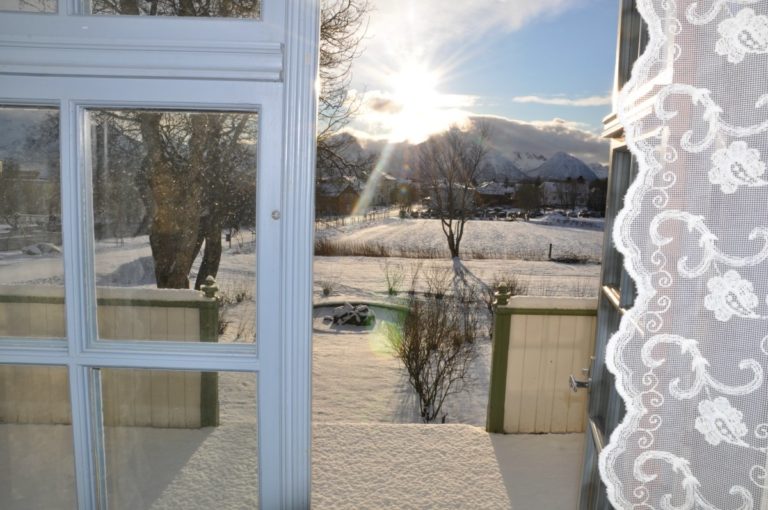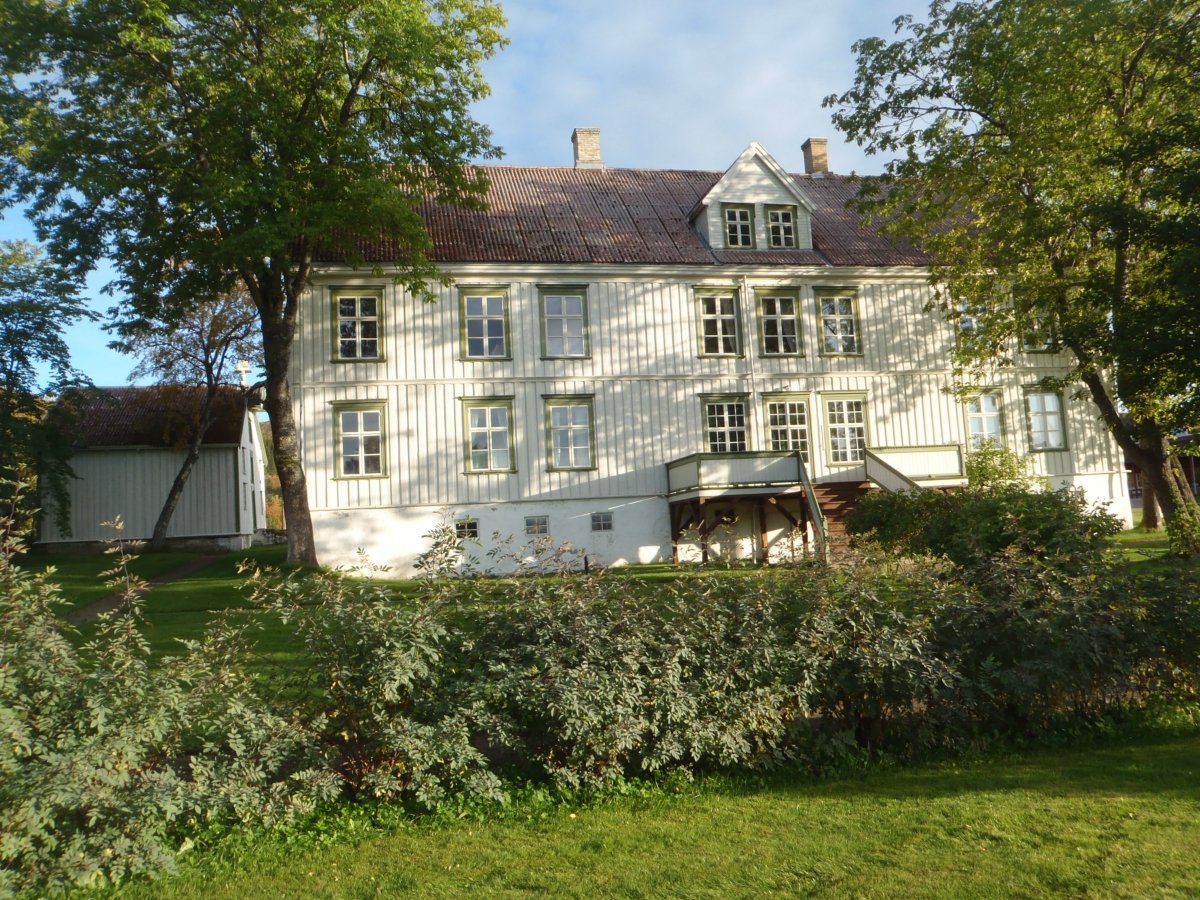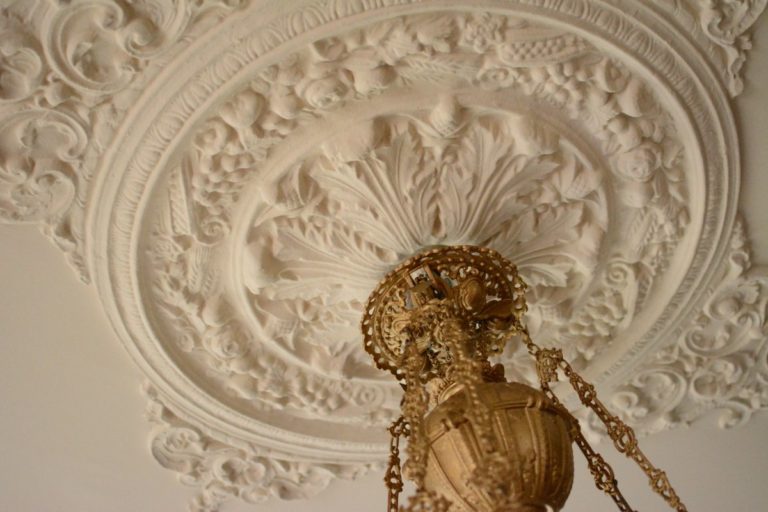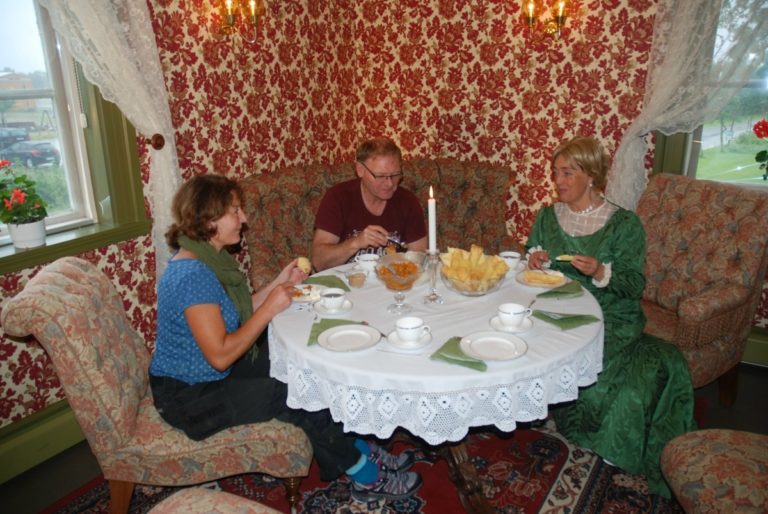The Vesterålen Museum is based in the old mansion of Melbu Hovedgård at Melbu in south Vesterålen. The house was built in about 1850, and was the biggest house north of Trondheim. However, the interior has been restored to represent the rich period of around 1900, when Christian Frederiksen was one of the foremost industrialists of Northern Norway.
“All the residents of Nordland shall be clothed in the wool of Northern Norway”
Christian Frederiksen extended the port at Melbu and opened the way for trade. He made the most of local materials for industrial purposes, and started up businesses like herring oil factories, dairies, soap factories, margarine factories, textile mills and oilskin manufacturing facilities. He wanted the residents of Nordland to be as self-sufficient as possible, and to depend as little as possible on the merchants of Trondheim and Bergen. He was also a driving force behind Vesterålens Dampskipsselskap, the steamship company that was the original Hurtigruten. In 1890, 77 people lived in Melbu, but by 1920 that number had risen to about 1,000.
Sit in a rocking chair and watch history unfold
At Melbu Hovedgård manor house, lean back in an American rocking chair and watch the short film clip about Christian Frederiksen and Melbu Hovedgård. A voice with a Vesterålen accent tells us in the florid Riksmål language of that era about the industrial boom, while people in large flower-bedecked hats, bearing walking sticks and monocles, dash past in old black and white photos. The advert for a Northern Norwegian soap says “just as good as soap from the south”. The highlight was in 1922 when Melbu Hovedgård received King Haakon, who had travelled up to the area to open Risøyrenna, the watercourse that enabled Hurtigruten to sail through Vesterålen. Christian Frederiksen was among the enthusiasts behind the project. For a moment, you believe that you are watching an old newsreel, which just shows you what a clever job the film-maker Gjermund Andreassen has done. The film is also available in English.
Plush furnishings and crystal chandeliers adorn every room
The salons in Melbu Hovedgård are spacious with high ceilings. They are decorated with stencil work, lace curtains, chaise longues with plush upholstery, crystal chandeliers, cast iron stoves and walnut tables. One of the highlights is a painting by the famous Lofoten artist Gunnar Berg, who was the brother of the lady of the house. One of the smaller rooms was a schoolroom, where the children of the house were taught by governesses.
Exhibitions are found throughout the house
Some of the rooms in Melbu Hovedgård are used for exhibitions. These tell the story of traditions such as turf cutting, in the days when peat used to be the most important winter fuel. The interests of smallholders are also presented; these people had to devote eight days to the work of sod roofing, and eight days to farm work, in order to pay the rent that allowed them to use their smallholding. There is also a small exhibition about the opera singer Kirsten Flagstad, who stayed in Melbu in the winter of 1916–17, when she was engaged to the son of the house, Gunnar Frederiksen.
The farm mound indicates this site is older than one would first imagine
On the south side of the house is an elegant garden, enclosed by a picket fence, with fountains that have been restored to their former grandeur. Trees grow in this garden that are normally found in warmer climes, such as linden and ash. There has probably been some kind of farm at Melbu Hovedgård for a long time; we know this because the buildings stand atop what is known as a farm mound, a rise in the terrain caused by 2–3,000 years of human activity. New buildings were constructed on the remains of the old ones. There are many such farm mounds along the coast of Northern Norway, but few are as clearly visible as this one. You can see the farm mound on the steep rise at the back of the house. The ticket office and general store are in the servants’ quarters.
Decline accelerated through the 20th Century
After 1920, the family business went into decline. Many of the industrial enterprises that had been established could not cope with the competition, and the crisis in the global economy after 1929 accelerated the decline. The son, Gunnar Frederiksen, took over in 1929, and moved to a more contemporary villa. The main house was then used by an agricultural school, was seized by the Germans during the occupation, and it is only in recent years that the Vesterålen Museum has been able to restore it.
Visiting Melbu Hovedgård manor house
In summer, Vesterålen Museum at Melbu Hovedgård has long opening hours and frequent guided tours by enthusiastic local guides. Also on offer are historic walks through Melbu town centre, which point out the various industrial enterprises started by Christian Frederiksen.


Visit Vesterålen
For all the information you need to know about visiting Melbu Hovedgård and the surrounding region, simply check out the Visit Vesterålen webpage.





